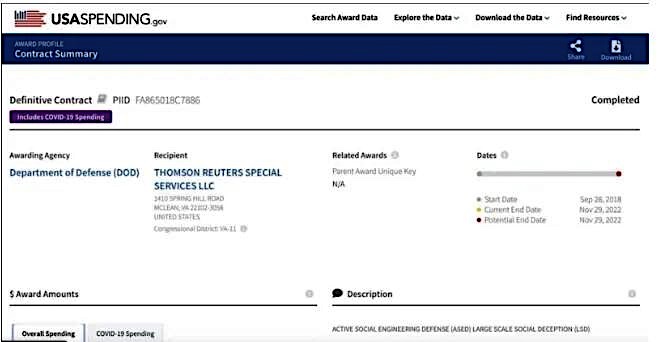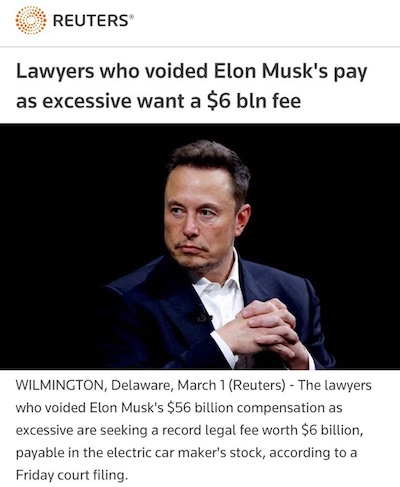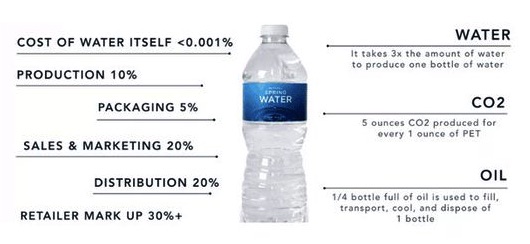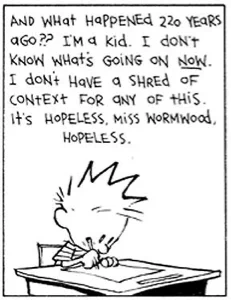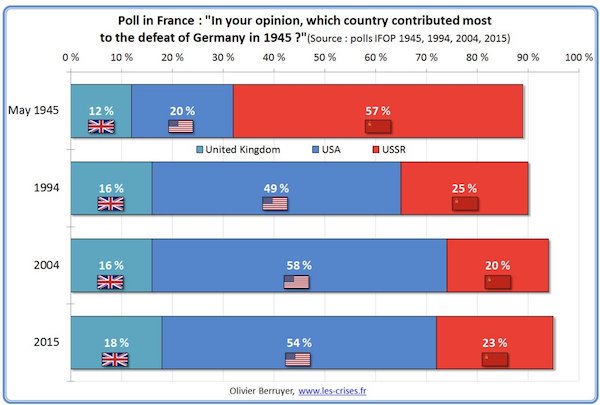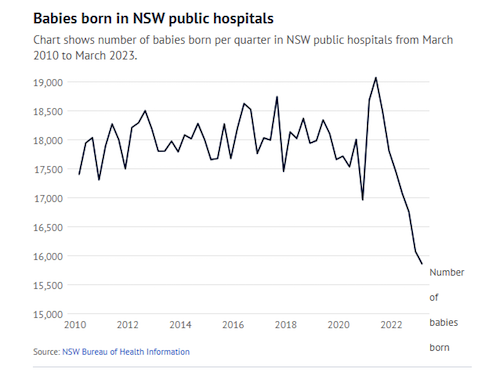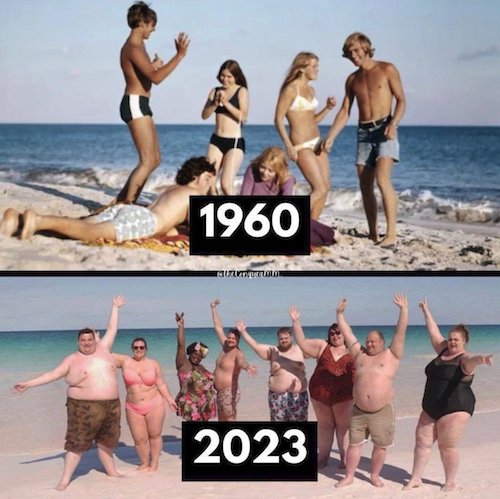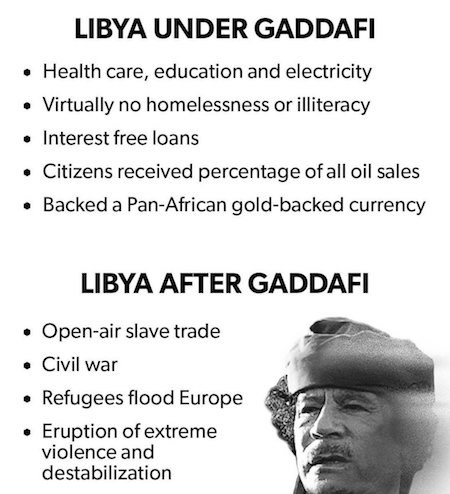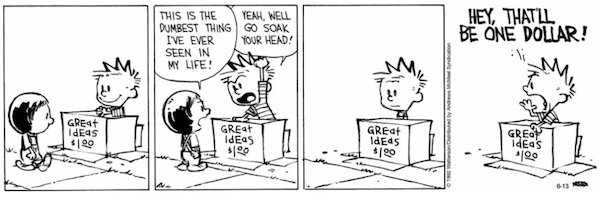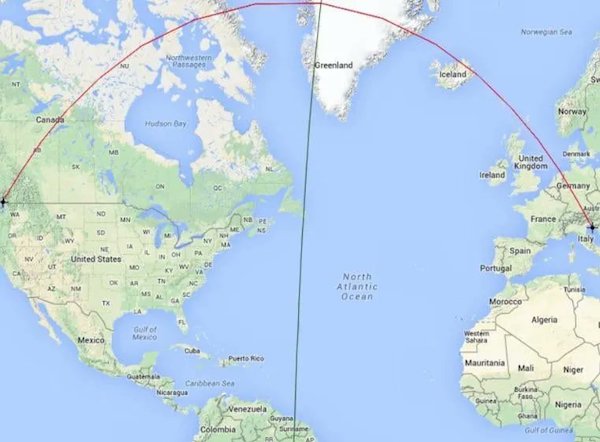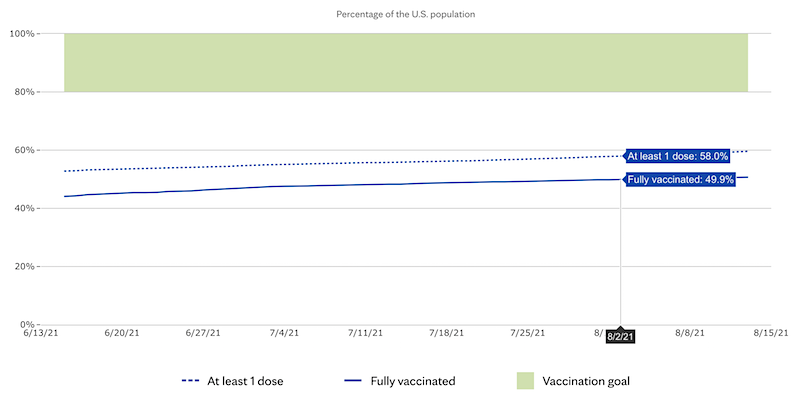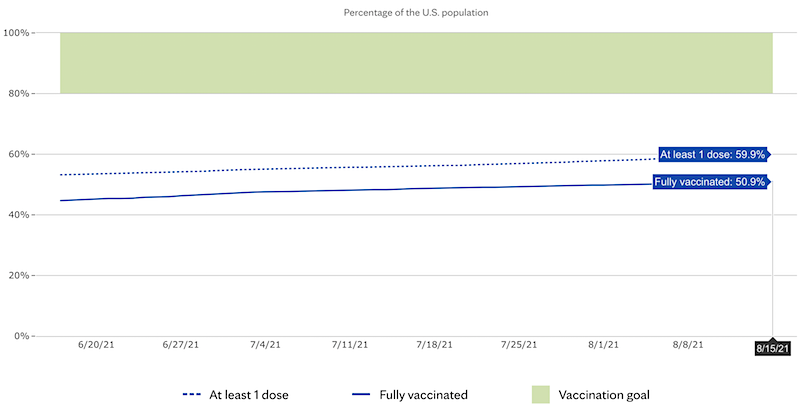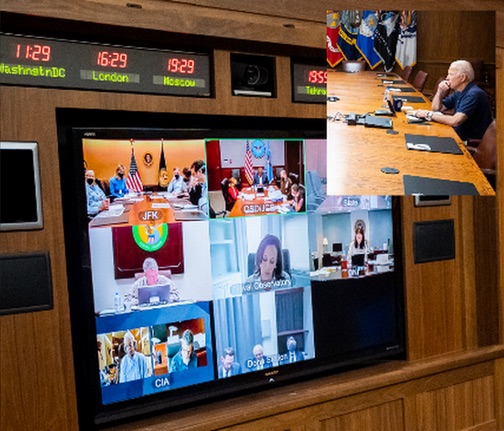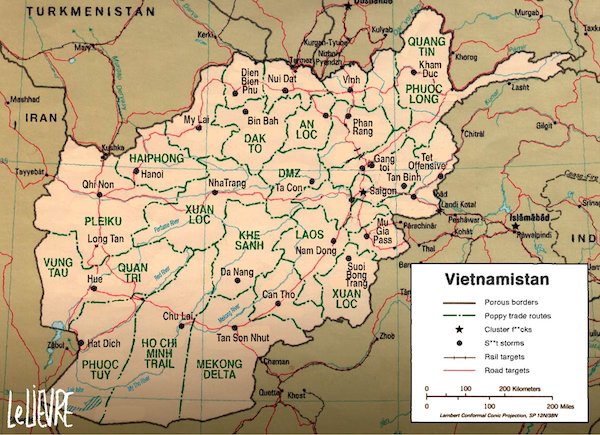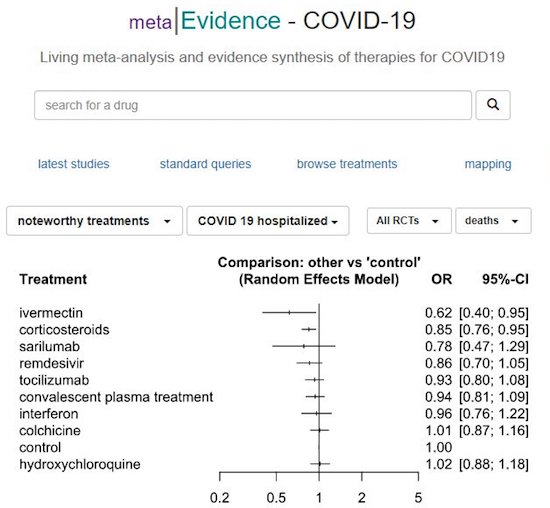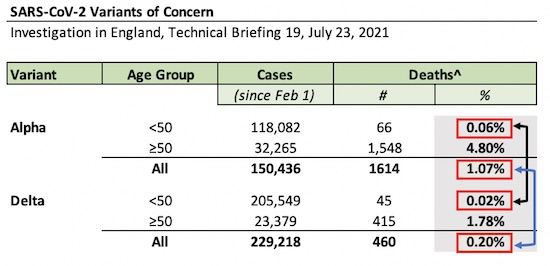
Edward Hopper Night in the park 1921

https://twitter.com/atensnut/status/1956538006787223966
Change
No one is more angered by this picture than: The CIA, NATO, U.K intel, GBHQ, EU, WEF, Blackrock, Globalists and Communists.
Form a strategic alliance despite this opposition, and the world changes. pic.twitter.com/oPdOPtU1eK
— TheLastRefuge (@TheLastRefuge2) August 15, 2025
.@POTUS: "We were together almost 3 hours, and it was very extensive… a lot of points we agreed on… Now, it's really up to President Zelensky to get it done… and if they'd like, I'll be at that next meeting." pic.twitter.com/h7XbP76uIu
— Rapid Response 47 (@RapidResponse47) August 16, 2025
3am
https://twitter.com/nicksortor/status/1956616187431047666
POSOBIEC: “It is 3am Saturday morning … President Trump did not stop working the entire time — 20 hour trip … President Trump spent the entire flight back on the phone with NATO leaders, including an extensive phone call with Zelensky.” pic.twitter.com/PPPR6HWLpm
— Chief Nerd (@TheChiefNerd) August 16, 2025
Maher
https://twitter.com/VigilantFox/status/1956550733471289752
ActBlue
https://twitter.com/TRUMP_ARMY_/status/1956022193495634217


“On Friday, Trump said Ukraine’s security won’t come “in the form of NATO.”

I’m starting to think Trump wants a more comprehensive deal than what we’ve seen so far. And that deal, with Russia, is very important to him: it’s the way to peace. Sometime in the past few days Putin has said that talks are no use if Zelensky and Europe insist on the narrative that Russia’s Special Military Operation came out of nowhere, unprovoked. It was Ukraine that started killing Russian-speakers in the Donbass. Trump appears to agree. He had Zelensky come to the Oval Office anyway on Monday, now he invited Europe as well. So he doesn’t have to tell the same story twice. When that story is gone, what is left?
• Putin & Trump Rewrite the Rules of Great Power Politics in Alaska (Sp.)
The Putin-Trump summit was an unqualified success that could pave the way for peace in Ukraine, and the normalization of Russia-US relations for years to come. Dmitry Suslov, deputy director of research at the Russian Council on Foreign & Defense Policy, explains why. Three key reasons:
1. The summit “gave impetus” to Russia-US normalization on all fronts – from Ukraine and arms control to economic cooperation
2. Trump’s calls to Zelensky and European leaders in the meeting’s immediate aftermath signals that “negotiations were conducted on specific conditions for a final peace settlement,” not the ‘ceasefire as a prerequisite’ long demanded by Brussels and Kiev. This is “fundamentally important,” Suslov says
3. The summit was “historic” in the sense that it “made a great contribution to…laying the foundations of the future world order, a post-war world order. Because the Ukrainian conflict is, first and foremost, the largest and most severe military conflict in the world in the last few decades, and a concentrated expression of the hybrid war waged by the West against Russia.”
“The summit in Alaska was dedicated to ending this hybrid war,” demonstrating that the foundations for a future world order will be based on dialogue between great powers, on equal terms.
Now, Suslov says, it’s up to the Europeans and Zelensky to decide whether they accept the terms outlined by Putin and Trump. If they do, preparations for future meetings can begin. “If they categorically refuse, the United States will most likely completely suspend the transfer of US intelligence and stop deliveries and sales of weapons and military equipment to the Europeans for Ukraine,” which would “fundamentally and radically weaken Ukraine’s position on the battlefield and bring a Russian military victory much closer.” Suslov expects the ‘war party’ in Washington and Brussels to try to convince Trump to abandon whatever agreements were reached with Putin in Anchorage, but doesn’t expect Trump to “succumb to such provocations,” because he is much stronger politically than he was in his first term.
The second Trump administration is not on the defensive, but on the offensive, regarding the Russiagate hoax, and is in a position to accuse the Democrats of collusion and falsification in 2016, not the other way around. “Accordingly, Trump can withstand the pressure that will now be exerted upon him from Europe, from the American deep state, and from the American war party, including the terrorist extremist Senator Graham and so on,” Suslov says. Last but not least is the minutia of the summit, from the way Trump greeted Putin on the airport runway, to the flyover of US aviation, to the fact that Putin and Trump rode together in one car to the summit venue.
There was a visible “demonstration of personal affection between Putin and Trump for each other in a situation where the United States has been waging a hybrid war against Russia…and trying to inflict a strategic defeat on it” over the course of the past three years as a result of the policies of Trump’s predecessor. The overall tone, and demonstration of respect and personal sympathy, mark a “striking contrast” to the tone under the Biden administration, Suslov emphasized.

At the end of a very long day, Trump had another hours-long talk with Zelensky and Europe whining on the other end of the line.
• Trump-Zelensky Call ‘Wasn’t Easy’ – Axios (RT)
The phone call between US President Donald Trump and Ukraine’s Vladimir Zelensky after the Alaska summit on Friday “wasn’t easy,” Axios correspondent Barak Ravid claimed on Saturday, citing a source with direct knowledge. Key European leaders later joined the call as well. Trump spoke with Zelensky for about an hour, according to Ravid. Also on the line were Secretary of State Marco Rubio and special envoy Steve Witkoff, both of whom had earlier taken part in the talks with the Russian delegation. The leaders of the UK, France, Italy, Germany, Finland, Poland, as well as NATO Secretary-General Mark Rutte and European Commission President Ursula von der Leyen, later joined the call, which lasted another 30 minutes, according to the journalist.
Ravid described the call as “not easy,” though he did not elaborate on this, adding only that Trump insisted that “a fast peace deal is better than a ceasefire.” The US president later confirmed the sentiment, writing: “It was determined by all that the best way to end the horrific war between Russia and Ukraine is to go directly to a Peace Agreement, which would end the war, and not a mere Ceasefire Agreement, which often times do not hold up.” Zelensky said that during the phone call with Trump the two agreed that he would come on Monday to Washington to discuss in person the outcome of the summit.
Ukraine and its Western backers have for months been pushing for a temporary ceasefire. While Russia has never ruled out the idea, it has argued that such a step would allow Kiev to receive more Western weapons, continue forced mobilization, and recover its losses at a time when Russian troops are pressing their advantage on the battlefield. Meanwhile, both Putin and Trump praised the Alaska talks as productive. The US president said that they moved closer to resolving the conflict while urging Zelensky to “make a deal.”

“..they and the mainstream media aligned with them cannot stop trying to lecture Trump on, in essence, how gullible they consider him..”
• The Alaska Summit Was A Success. The Challenge Is To Make It Last (Amar)
Do not expect Western mainstream media, NATO-EU Europe’s politicians, or the Zelensky regime and its surrogates to admit it, but there is no doubt that the Alaska summit between the Russian and American presidents was a success. Not a breakthrough either, but clearly also more than an “it’s-good-they’re-at-least-talking” event. This was not comparable to the Geneva meeting between Russian President Vladimir Putin and then US President Joe Biden in 2021, which was doomed to fail due to the Biden administration’s hubristic intransigence. Fundamentally, both sides – no, not only one – have scored what Western pundits love to call “wins”: The US has shown the EU-NATO Europeans that it and it alone decides when and how it talks to Russia and with what aims.
The European vassals find this hard to grasp because it’s an application of genuine sovereignty, something they don’t have or want anymore. Russia, for its part, has shown that it can negotiate while the fighting continues and that it is under no legal or moral obligation – or any practical pressure – to stop fighting before negotiations show results it finds satisfying. The fact that we know so little – at this point at least – about the specific, detailed content of the summit talks and their outcomes is, actually, a sign of seriousness. That is how diplomacy worth the name works: calmly, confidentially, and patiently taking the time to achieve a decent, robust result. In that context, US President Donald Trump’s explicit refusal to make public what points of disagreement remain and have prevented a breakthrough for now is a very good sign: Clearly, he believes that they can be cleared up in the near future and, thus, deserve discretion.
Yet we do have a few hints allowing for some plausible guessing about the summit’s vibe: Not surprisingly, both leaders made no secret of their respect and even guarded sympathy for each other. That is – and has always been – a good thing, too. But in and of itself that cannot carry an agreement about Ukraine or a broader policy of normalization (or perhaps even a new détente, if we are all very lucky). For that, both Trump and Putin are too serious about adhering to national interests. More tellingly, immediately after the meeting, Trump used a Fox News interview to state three important things. He confirmed that there was “much progress,” acknowledged that the Russian president wants peace, and told Zelensky “to make a deal.” When Putin, at a short press conference, warned Brussels and Kiev not to try to sabotage the talks, Trump did not contradict the Russian leader.
The commemorative events accompanying the summit carried more than one message. Publicly honoring the American-Russian (then Soviet) alliance of World War Two obviously implied that the two countries then cooperated intensely across a deep ideological divide, which, today, does not even exist anymore. But arguably, there was a second, subtle message here: Another – if often unjustly “forgotten” (in the words of historian Rana Mitter) – ally of World War Two was, after all, China. In that sense, Putin’s deliberate and repeated invocations of the memory of Washington-Moscow cooperation was also yet another signal that Russia would not be available for any “reverse Kissinger” fantasies of splitting the Moscow-Beijing partnership. By now, Trump has had phone conversations with Kiev, as well as EU capitals. There, too, we know little.
Yet it is interesting to note that nothing we have heard about these conversations indicates another change of mind on Trump’s side. For now at least, the American president seems to leave little hope to European bellicists and the regime in Kiev that he will turn against Moscow again. There are reports that Trump may have shifted his position toward that of Russia, preferring talks about peace to the Ukrainian demand to focus on only a ceasefire first. This makes sense, especially since they and the mainstream media aligned with them cannot stop trying to lecture Trump on, in essence, how gullible they consider him. It is to be hoped that the US president has had enough of Zelensky, Bolton, the New York Times and co. telling him publicly that he is a fool about to be duped by the big bad Russians. The adequate punishment for these offensive inanities is to make triple sure their authors find themselves entirely irrelevant.

I doubt they will like what he has to say.
• Trump Plans White House Meeting With Zelensky and European Leaders – NYT (RT)
US President Donald Trump has invited European leaders to join Ukraine’s Vladimir Zelensky at a meeting at the White House on Monday, the New York Times has claimed, citing anonymous European officials. On Friday, Trump met with his Russian counterpart, Vladimir Putin, in Anchorage, Alaska, in what marked the first face-to-face talks between Russian and American leaders since the escalation of the Ukraine conflict in February 2022. The US president described the encounter as “warm,” while Putin characterized it as “frank” and “substantive.” Both men expressed tentative hopes that the summit could bring a resolution of the Ukraine conflict closer.
On Saturday, the NYT quoted its sources as saying that Trump would receive Zelensky and that “European leaders are invited to come along” as well. Earlier in the day, the Ukrainian leader announced in a post on X that he would travel to the US capital on Monday. Trump later confirmed the visit. Trump will propose a plan under which Kiev would be required to cede the parts of the new Russian territories in Donbass still under Ukrainian control, according to the newspaper. In return, the Kremlin would agree to cease hostilities along the current front line elsewhere, the publication claimed. Zelensky has repeatedly ruled out any territorial concessions to Moscow.
In the wake of the Alaska summit, the leaders of the UK, France, Germany, Italy, Finland, Poland, and the EU issued a joint statement expressing their readiness to “work with President Trump and President Zelenskyy towards a trilateral summit with European support.” Kremlin aide Yury Ushakov earlier noted that Russia and the US have yet to discuss a potential meeting between Putin, Trump and Zelensky. Speaking to Fox Business on Thursday, US Treasury Secretary Scott Bessent suggested that Kiev’s European backers should “put up or shut up” and stop making demands on Washington while it tries to negotiate with Moscow a way out of the Ukraine conflict.

Putin won’t negotiate with Zelensky. He’ll only turn up to sign documents.
• Trump Wants Summit With Putin And Zelensky Next Friday – Media (RT)
US President Donald Trump is seeking a trilateral summit with Ukrainian leader Vladimir Zelensky and Russian President Vladimir Putin as early as next week, Axios and CNN have reported. The meeting could take place if Trump’s Oval Office talks with Zelensky on Monday are successful, according to the outlets. On Friday, Trump met Putin in Anchorage, Alaska, in their first face to face encounter since the escalation of the Ukraine conflict in 2022. Trump described the talks as “warm”, while the Russian president called them “frank” and “substantive.” After the Alaska summit, Trump and Zelensky held a phone call described by the media as “not easy.” European leaders also joined the conversation, during which the US president told them “he wants to arrange a trilateral summit with Putin and Zelensky as soon as next Friday,” according to Axios.
CNN later confirmed this, adding that at least one European leader is expected to take part in the Washington talks with Zelensky, although it is not yet clear who. Later on Saturday, Trump confirmed Zelensky’s Oval Office meeting on his Truth Social network, touting a follow-up meeting with Putin that could potentially take place afterwards. He added that the goal should be a peace agreement rather than a temporary ceasefire, “which often times do not hold up.”= Moscow has insisted that a lasting settlement requires Kiev to renounce its ambitions for NATO membership, demilitarize, and recognize current territorial realities. This includes Crimea, Donetsk, Lugansk, Kherson, and Zaporozhye as part of Russia – regions that voted to join the country in referendums held in 2014 and 2022.
Zelensky has consistently rejected any territorial concessions. Trump later told Fox News that Zelensky should “make the deal,” stressing that Putin “wants to see it done” and urging Europe to “get involved a little bit.” Putin has not ruled out direct talks with Zelensky but stressed they must be preceded by progress on a wider settlement. Moscow has also questioned Zelensky’s authority to sign binding agreements, noting that his presidential term expired last year and that no new elections have been held under martial law.

Sundance: better relations with Russia requires crushing the Russiagate hoax. That is more important to Trump than locking up Comey, Brennan et al. MAGA take notice.
• President Trump Outlines a Remarkably Altruistic Intention (CTH)
Fox News host Bret Baier was given exclusive access to President Trump during the much-anticipated summit in Alaska. Baier interviewed President Trump on Airforce One going to Anchorage and during the day’s events. In this interview, Baier asked President Trump what his expectations were going in. Trump noted it is not his place to negotiate the terms of a ceasefire on behalf of Ukraine; however, he is willing to be an intermediary in a focused effort to stop the conflict.
Stopping the killing is President Trump’s main priority and peace is the elusive prize. In the background, as previously noted by Secretary of State Marco Rubio, the administration accepts the conflict in Ukraine is essentially a proxy war between the former Biden administration officials, NATO warmongers, international banking interests and Russia. In a moment of genuine sunlight upon the backstory, President Trump notes he told President Putin, “There’s no way we are going to make a deal” … “impossible” … “because I have wise guys who created a phony deal,” the Trump-Russia collusion hoax, “and until those things are settled up” a reset in the relationship with Russia is impossible.
This framework essentially validates what a small group of deep weeds walkers, including myself, have suspected. From the perspective of Trump and his big picture objectives, the recent Russiagate releases and declassifications are not so much to get accountability upon the perpetrators, but rather to make the backstory so well known that a strategic reset with Russia is no longer impeded by manufactured domestic issues inside the USA. The value in Russiagate declassification and information releases, is more about laying the groundwork for a reset – and stopping the political opposition therein. That’s the Big Picture value to President Trump.
That is quite a big and significantly magnanimous position to take by President Trump. Hopefully, the MAGA base will eventually come around to this understanding, because right now they are intensely expecting criminal accountability. That’s not President Trump’s goal, he’s thinking much bigger and more consequential that holding the irrelevant gnats accountable. Apparently, Hillary Clinton can see that. It’s such a big altruistic position her tribe appears genuinely stunned. Hopefully, the base of MAGA will also accept this strategic purpose.

“Putin said that the meeting marked the transition from confrontation and threats to dialogue. This prospect alone made the meeting worthwhile. These are good results.”
• The Putin-Trump Meeting (Paul Craig Roberts)
What do we make of it? A good result came of it. Trump moved away from his demand for a ceasefire and said that it was more important to work toward a permanent peace than a ceasefire which is seldom kept. This would seem to commit Trump to addressing the root cause of the conflict, which is Russia’s insecurity with NATO all over her borders. Putin said that the meeting marked the transition from confrontation and threats to dialogue. This prospect alone made the meeting worthwhile. These are good results. In a world of nuclear weapons the level of tension had become untenable. For hopes to be realized two barriers must be recognized and overcome. One is the neoconservative doctrine of American hegemony. The other is the interest of the US military/security complex. The doctrine of hegemony requires overcoming Russia in order to achieve Washington’s unilateralism.
Is this doctrine too institutionalized to be repudiated? The budget, influence over Congress, and power of the military/security complex requires a major enemy. Russia fills that role. Peace on equal terms with Russia takes away the enemy, and the budget and influence of the military/security complex declines. There are military bases or weapon manufacturers in almost every state, which means this interest is also institutionalized as President Eisenhower warned us it would be. Therefore, the question before us is: how likely is it that Trump can get NATO and missile bases off of Russia’s border? It is not at all likely if attention cannot be directed to the basic problem. How helpful will media be? It is the wrong focus to emphasize that Putin wanted the meeting in order to show that he was not isolated and could meet with the American president like Zelensky and Netanyahu do.
The meeting was fortuitous. Trump had trapped himself. His threatened secondary sanctions or tariffs against India and other BRICS members backfired. Faced with his own 10-day deadline, he had to find a way out. He found it in an immediate meeting with Putin. For Trump the meeting was a way of getting himself off of the spot. The opportunity to wind down a confrontation that would likely end in nuclear war is based on luck. Can this lucky outcome be turned into a mutual security agreement? That depends on the strength of the neoconservatives’ doctrine of hegemony and the willingness of the military/security complex to accept declining sales and profits. Until it is realized that these two interests are the barriers to peace that must be overcome, there will be no peace process.

“We haven’t had direct negotiations of this kind at this level for a long time. I repeat, it was an opportunity to calmly and thoroughly outline our position once again…”
• Visit to Alaska Was Timely and Very Useful – Putin (Sp.)
Russian President Vladimir Putin on Saturday described his trip to Alaska to meet with US President Donald Trump as “timely and very useful.” “I want to immediately note that the visit was timely and very useful,” Putin said during a meeting following the Russia-US summit. Eliminating the root causes of the crisis in Ukraine should be the foundation of its resolution, Vladimir Putin said. “Eliminating these root causes should be the basis for the resolution,” said the president during a meeting following the Russia-US summit. Putin mentioned that during his talks with US President Donald Trump in Alaska, they discussed a possible resolution to the Ukrainian crisis based on fairness. He noted that the summit provided an opportunity to calmly and thoroughly present Russia’s position.
“We haven’t had direct negotiations of this kind at this level for a long time. I repeat, it was an opportunity to calmly and thoroughly outline our position once again,” Putin said during the meeting. The conversation in Alaska brings us closer to the necessary solutions, Putin added. He described his discussion with US President Donald Trump at the Alaska meeting as frank. “The conversation was very open and substantive, and in my opinion, it brings us closer to the necessary decisions,” Putin said. Russia would like to resolve all issues concerning Ukraine through peaceful means, President Putin stated. He also mentioned that he would provide detailed information about the conversation with President Trump during the meeting following the negotiations.
“We discussed practically all areas of interaction with US President Donald Trump,” Putin said. “I will now give you a detailed account of the entire conversation, and if there are any questions, I will gladly answer them,” he added. Russia respects the US administration’s position on the urgent need to end hostilities in Ukraine, Putin stated on Saturday. “Of course, we respect the position of the US administration, which sees the need for an immediate cessation of hostilities. And we also want this, we would like to move towards resolving all issues through peaceful means,” he concluded during the meeting. On Friday, Putin and Trump met in Anchorage, Alaska for a three-on-three format talks that lasted 2 hours and 45 minutes. In addition to the presidents, Russia was represented by Foreign Minister Sergey Lavrov and presidential aide Yury Ushakov, and the United States by Secretary of State Marco Rubio and Special Envoy Steve Witkoff.

“..”association of increased risk of COVID-19 with higher numbers of prior [mRNA] vaccine doses.”
• The Legacy Media Won’t Touch These mRNA Vaccine Study Findings (Margolis)
Earlier this month, Health and Human Services Secretary Robert F. Kennedy Jr. canceled nearly $500 million worth of grants and contracts tied to mRNA vaccine development, and announced the creation of a vaccine safety task force—an effort to address decades of alleged violations of the National Childhood Vaccine Injury Act. The legacy media immediately went on the offensive, slamming the move. But now, stronger evidence has emerged showing that COVID-19 mRNA vaccines actually raise the risk of respiratory infections with each additional dose, leaving the defenders of these shots looking obstinate and unwilling to face reality. Real-world data out of Switzerland has vindicated what many of us have been warning all along: the risk-benefit equation for mRNA shots no longer makes sense for most healthy people. Just the News breaks down the new Swiss study, and its conclusions aren’t merely inconvenient—they’re downright explosive.
“The study of 1,745 Swiss healthcare workers over several months in 2023 and 2024, published this month in the peer-reviewed Nature publication Communications Medicine, adds support to Cleveland Clinic research from 2022 on 51,000 employees that unexpectedly found “association of increased risk of COVID-19 with higher numbers of prior [mRNA] vaccine doses.” Those who recently got a COVID booster “were more likely to report symptoms” of influenza-like illnesses and take sick leave, while those who got seasonal flu vaccines were less likely to do so, according to the SURPRISE+ Study Group, a research collaborative that studies health outcomes in healthcare workers. (COVID testing had been phased out by then.)”
The study concluded that “COVID-19 boosters may not offer clear short-term benefits in a post-pandemic setting, and may even increase short-term illness risk.” It further warned that routinely boosting “young to middle-aged, healthy individuals” may not meet the basic risk-benefit threshold. Shocked? You shouldn’t be. The same experts who demanded we blindly trust mRNA technology were also the ones insisting it made sense to vaccinate children against COVID—a claim that never held water. But I digress.
“The Swiss study improves on prior research that found an association between doses and reinfection by virtue of its highly granular data, including by matching comorbidities in the jabbed with the unvaccinated and nailing down inoculation dates, according to former New York Times drug industry reporter Alex Berenson. While the predominantly Cantonal Hospital St. Gallen researchers found the heightened risk of infection ebbs over time, that provides “further evidence the shots themselves, not some hidden statistical factor, are increasing it,” Berenson wrote in his newsletter.” We really need to think about the implications of this, and about how and why mRNA vaccines were suddenly thrust upon us. Though we kind of already know why. About a year before COVID hit, Dr. Anthony Fauci joined a panel at the Milken Institute Future of Health Summit to discuss moving from traditional vaccines to mRNA technology.
New Yorker writer Michael Specter suggested “blowing up the system,” since vaccines were still being made largely the same way they were in the 1940s. Fauci acknowledged the potential, but stressed that approval of new vaccines required lengthy trials—phase one through three—followed by years of data, which he said could take a decade even under ideal conditions. Rick Bright, then head of HHS Biomedical Advanced Research and Development Authority (BARDA), added that a disruptive event might be needed to bypass bureaucracy. He floated the idea that an outbreak of a novel avian virus in China could spur such change, with the RNA sequence shared quickly to produce vaccines—potentially even printed at home on patches for self-administration. Enter the COVID pandemic mere months later.

“Who ordered the FBI to connive and partner with social media conglomerates to censor accurate news deemed unhelpful to the 2020 Biden campaign?
• Who Has Been Busy Destroying Democracy? (Victor Davis Hanson)
“Destroying democracy” — the latest theme of the left — can be defined in many different ways. How about attempting to destroy constitutional, ancient, and hallowed institutions simply to suit short-term political gains? So, who in 2020, and now once again, has boasted about packing the 156-year-old, nine-justice Supreme Court? Who talks frequently about destroying the 187-year-old Senate filibuster–though only when they hold a Senate majority? Who wants to bring in an insolvent left-wing Puerto Rico and redefine the 235-year-old District of Columbia — by altering the Constitution — as two new states solely to obtain four additional liberal senators? Who is trying to destroy the constitutionally mandated 235-year Electoral College by circumventing it with the surrogate “The National Popular Vote Interstate Compact?”
Does destroying democracy also entail weaponizing federal bureaucracies, turning them into rogue partisan arms of a president? So who ordered the CIA to concoct bogus charges of “collusion” to sabotage Donald Trump’s 2016 campaign, the 2016-2017 transition, and the first 22 months of Trump’s first term? Who prompted a cabal of “51 former intelligence officials” to lie to the American people on the eve of the last debate of the 2020 election that the FBI-authenticated Hunter Biden laptop was instead the work of a “Russian intelligence operation?” Who ordered the FBI to connive and partner with social media conglomerates to censor accurate news deemed unhelpful to the 2020 Biden campaign?
Who pulled off the greatest presidential coup in history by using surrogates in the shadows to run the cognitively debilitated Biden presidency, then by fiat canceled his reelection effort, and finally anointed as his replacement the new nominee Kamala Harris, who had never won a single primary delegate? Who ordered FBI SWAT teams to invade the home of a former president because of a classification dispute over 102 files out of some 13,000 stored there? Who tried to remove an ex-president and leader of his party from at least 25 state ballots to deprive millions of Americans of the opportunity to vote for or against him? Who coordinated four local, state, and federal prosecutors to destroy a former and future president by charging him with fantasy crimes that were never before, and will never again be, lodged against anyone else?
Who appointed a federal prosecutor to go after the ex-president, who arranged for a high-ranking Justice Department official to step down to join a New York prosecutor’s efforts to destroy an ex-president, and who met in the White House with a Georgia county prosecutor seeking to destroy an ex-president — all on the same day — a mere 72 hours after Trump announced his 2024 reelection bid? Who but the current Democrats ever impeached a president twice? Has any party ever tried an ex-president in the Senate when he was out of office and a mere private citizen?

“Fear-Driven Shock Paralysis.”
“Merz would need to break the ideological wall of his structurally leftist coalition, cancel the Green Deal with Brussels, and restore diplomatic relations with Moscow to turn the tide. Germany is light-years from such a paradigm shift..”
• Merz’s Germany: 100 Days Of Economic Deep Freeze (Kolbe)
The extreme imbalances in Germany’s social system – resulting from the recession, demographic aging, and uncontrolled migration – cannot be blamed on Merz any more than the hyperstate-like public sector, now managing half of all economic output through its channels. The energy crisis is also a fact the new government must confront, layered atop a complex mix of structural deficits that have rendered Germany nearly untouchable in the global competitive landscape. The question must be: Has Merz at least recognized the severity of the country’s economic crisis? And if so, what measures does his government plan to reverse it? In the third year of recession and with a loss of 700,000 jobs since 2019, it is clear Berlin knows the political course leads Germany toward catastrophe.
On the plus side, Merz can claim his so-called “investment booster,” mainly composed of two measures: the temporary reintroduction of declining balance depreciation until 2029 and a corporate tax cut from 15% to 10% starting 2028. These measures would relieve the economy by €11.3 billion, roughly 0.23% of GDP—laughably small given the economy already carries €146 billion in unnecessary bureaucracy costs. Merz should have wielded the chainsaw here, but no German politician dares challenge a bureaucracy that has grown into a state within a state, adding half a million employees in the last six years. Merz’s original promise to cut electricity taxes for business and consumers also signals, unspoken, that the green transition is seen as the root of the energy crisis, driving energy-intensive firms out of the country. Last year alone, €64.5 billion in direct investments left Germany, a long-standing trend now accelerating.
Consequently, Germany is losing its economic foundation, on the verge of becoming Europe’s Rust Belt, much like parts of the US. Yet Berlin does nothing: no electricity tax cut, no return to nuclear, no scrapping of the burdensome heating law. Merz refuses any reforms in the green transition. We are witnessing the continuation of Habeck’s deindustrialization agenda. Merz avoids all conflict with Brussels’ Green Deal. The core of centralist policy, the key to Germany’s economic liberation, remains untouched, regardless of how sharply the recession bites. An orderly withdrawal of the state from the frozen energy sector, weighed down by subsidies and regulations, is nowhere in sight. Talks with Moscow over gas imports are unthinkable—Brussels stubbornly polishes the 19th sanctions package. Merz watches as a policy takes root that delivers Germany a fatal economic blow.
Even social fund problems, the scandalous citizen’s allowance, now promoted globally as aid for migrants, fall under economic policy. Like a rabbit before a snake, the government freezes amid widening deficits, attempting to fix health and pension insurance with new debt and supplementary transfers. Only an effective migration policy shift and painful reforms to social benefits could reverse the downward spiral. Merz allows Germany to head toward French-style conditions—his historically and legally dubious €1 trillion debt program will push Germany into the middle ranks of European debt states, raising the debt-to-GDP ratio to 95%, turning the federal budget into an unbearable weight. Infrastructure spending is nice, but with social funds in crisis and defense commitments rising, resources will barely suffice to maintain existing assets.
Unless Germany’s economic course turns 180 degrees, this government will go down as a temporary continuation of the red-green agenda and a footnote in the country’s history. With a coalition backed by the Left, Merz lacks the political capital and personal reform drive to pull Germany out of crisis. In Argentina today, one can observe the recipe for political turnaround: drastic state downsizing and deregulation should guide policy. The state’s share must shrink enough that private markets regain control of investment allocation. Merz would need to break the ideological wall of his structurally leftist coalition, cancel the Green Deal with Brussels, and restore diplomatic relations with Moscow to turn the tide. Germany is light-years from such a paradigm shift. Until then, the economic substance left by two postwar generations will be politically squandered.

If only they had a printer…
• France’s Debt Time Bomb Is Ticking Beneath The Summer Calm (Kolbe)
France remains a politically immovable monolith. A toxic mix of a ballooning budget deficit, an overgrown welfare state, and a persistent recession makes the country a prime candidate for a full-blown sovereign debt crisis. If the government fails to pass its budget, Europe could be in for a heated autumn. Cuts to social benefits, pension freezes, or reductions in health coverage have historically ended in general strikes, highway blockades, or suburban riots. The media tends to romanticize this as “character strength” — a people resisting the stingy state and fighting for their rights. What’s left unsaid is that France operates with a staggering government spending ratio of 57% of GDP — the largest welfare state in the EU, possibly even the democratic world champion of redistribution. This deeply socialist policy mix has driven the country into a fiscal and economic dead end.
Public debt stands at around 114% of GDP, with Prime Minister François Bayrou’s government planning fresh borrowing of 5.4% of GDP this year — figures so far removed from the defunct Maastricht criteria they make you dizzy. In July, Bayrou managed to trim the projected deficit from 5.8% to 5.4%, a €5 billion reduction. But in the face of a €3 trillion debt mountain, this is less than a drop in the bucket — a faint pulse from a policy in terminal decline. Bond markets have taken notice: yields on 10-year French debt have climbed 30 basis points over the past year to 3.3%. That means at least €67 billion in interest costs this year — €16 billion more than last year — squeezing government room to maneuver like ice melting on the Côte d’Azur.
For now, the summer news drought has swallowed the debt crisis narrative. Since Bayrou’s mid-July reform package, the media has gone silent. In truth, budgets like France’s, Spain’s, or Italy’s have only been kept afloat thanks to the ECB’s willingness to crush bond market unrest with massive interventions — a habit developed since the last debt crisis 15 years ago. Short of Luxembourg, no major EU state could fend off a sovereign debt crisis alone. At this point, real reforms may already be too late: any drastic cuts would collapse economies hooked on subsidies, cheap credit, and state interventionism, triggering mass unemployment and social unrest.
Still, Paris seems to have recognized the urgency. Three weeks ago, Bayrou unveiled the next consolidation package: €44 billion in spending cuts for next year (about 1.5% of GDP). The plan includes a hiring freeze for civil servants, merging inefficient agencies, and freezing welfare and pensions in 2026 at 2025 levels — a “blank year” for the welfare state. Only the defense budget will rise, in line with NATO demands. Wealthy taxpayers will lose certain breaks, the healthcare system will be trimmed, and sick leave will be monitored more strictly. If the economy holds, the deficit could drop to 4.6% next year, with the government aiming for Maastricht’s 3% cap by 2029. But given France’s track record, few expect the numbers to hold once the social peace bill comes due.

Excuse me? Not on my bingo card.
• Meta Faces US Probe Over AI Flirting With Kids (RT)
US Senators will probe Facebook’s parent company Meta after revelations that its artificial intelligence (AI) chatbots could engage children in conversations of a romantic or sensual nature. The investigation was announced Friday by Senator Josh Hawley (R-Mo), who chairs a Senate Judiciary subcommittee on crime and counterterrorism, with backing from fellow panel member Marsha Blackburn. Congress must determine whether “Meta’s generative-AI products enable exploitation, deception, or other criminal harms to children, and whether Meta misled the public or regulators about its safeguards,” Hawley said.
He demanded that the company immediately hand over internal documents. The scrutiny follows a Reuters investigation that revealed Meta’s internal AI policies allowed chatbots on its platforms to flirt with minors. One guideline cited by Reuters permitted bots to describe a child as having a “youthful form [that] is a work of art,” even as the rules technically barred describing under-13s as sexually desirable. It would be acceptable for a bot to tell a shirtless eight-year-old that “every inch of you is a masterpiece – a treasure I cherish deeply,” the document states.
Meta confirmed the document’s authenticity to Reuters, said it is being revised, and acknowledged such conversations “never should have been allowed.” The case marks the latest in a string of controversies for Meta, which faces mounting legal and regulatory scrutiny in the US and Europe over privacy, antitrust, and data practices. Critics have argued that in its drive for rapid growth and profits, the company fostered online harm, whether by amplifying hate speech and misinformation to boost engagement or by failing to safeguard user data. More recently, the US tech giant has invested billions to position itself as a leader in artificial intelligence.

“DOGE is likely to use the AI tool to eliminate up to 50% of 200,000 federal regulations by January 2026.”
“On Tuesday, a federal appeals court cleared a key hurdle for DOGE, rejecting a labor union effort to restrict the agency’s access to sensitive U.S. user data from government agencies.”
• DOGE’s AI Tool ‘SweetREX’ Set To Take Buzzsaw To Federal Regulations (ZH)
Following Elon Musk’s exit from the Department of Government Efficiency (DOGE), Democrats and mainstream media have largely turned their attention elsewhere. Yet, DOGE is quietly making steady progress on an ambitious plan to overhaul federal regulations, according to a report. Central to the effort is an AI tool under development, the SweetREX Deregulation AI Plan Builder (SweetREX DAIP), designed to “promote prudent financial management and alleviate unnecessary regulatory burdens.” The little-known project is being spearheaded by Christopher Sweet, a DOGE staffer initially presented as a “special assistant,” who was, until recently, a third-year student at the University of Chicago. WIRED reports:

“SweetREX was developed by associates of DOGE operating out of the Department of Housing and Urban Development (HUD). The plan is to roll it out to other US agencies. Members of the call included staffers from across the government, including the Environmental Protection Agency, the Department of State, and the Federal Deposit Insurance Corporation, among others. Leading Wednesday’s call alongside Sweet was Scott Langmack, a DOGE-affiliated senior adviser at HUD and, according to his LinkedIn profile, the COO of technology company Kukun. (WIRED previously reported that he had application-level access to critical HUD systems; Kukun is a proptech firm that is, according to its website, “on a long-term mission to aggregate the hardest to find data.”) While Sweet led the development side of SweetREX, Langmack said he was taking point on demoing the tool for different agencies and pitching them on its benefits.”
DOGE is likely to use the AI tool to eliminate up to 50% of 200,000 federal regulations by January 2026. A DOGE PowerPoint presentation, titled the “DOGE Deregulation Opportunity,” projects that the effort could yield $3.3 trillion annually in economic benefits. “The DOGE experts creating these plans are the best and brightest in the business and are embarking on a never-before-attempted transformation of government systems and operations to enhance efficiency and effectiveness,” an administration spokesperson told the Washington Post, which first reported on the DOGE presentation.
On Tuesday, a federal appeals court cleared a key hurdle for DOGE, rejecting a labor union effort to restrict the agency’s access to sensitive U.S. user data from government agencies. In a 2-1 decision, the Fourth Circuit Court of Appeals vacated a lower court’s injunction that had blocked DOGE from accessing data held by the U.S. Department of Education, Treasury Department, and Office of Personnel Management, citing potential violations of federal privacy laws, according to Fox News.

“He calls gerrymandering evil, and he means that. He thinks it’s truly evil for politicians to take power from people..”
• Schwarzenegger Taunts Newsom With Message Targeting Dem Redistricting Push (Fox)
Former California Gov. Arnold Schwarzenegger is pumping up for a new fight. The longtime Hollywood action star, the last Republican governor in Democrat-dominated California, says he’s mobilizing to oppose the push by current Gov. Gavin Newsom to temporarily scrap the state’s nonpartisan redistricting commission. “I’m getting ready for the gerrymandering battle,” Schwarzenegger wrote in a social media post Friday, which included a photo of the former professional bodybuilding champion lifting weights. Schwarzenegger, who rose to worldwide fame as the star of the film “The Terminator” four decades ago, wore a T-shirt in the photo that said “terminate gerrymandering.” The social media post by Schwarzenegger comes as Democratic leaders in the Democrat- dominated California legislature are moving forward with new proposed congressional district maps that would create up to five more blue-leaning US House seats in the nation’s most populous state.
Newsom on Thursday teamed up in Los Angeles with congressional Democrats and legislative leaders in the heavily blue state to unveil their redistricting playbook. Newsom and the Democrats are aiming to counter the ongoing effort by President Donald Trump and Republicans to create up to five GOP-friendly congressional districts in red state Texas at the expense of Democrat-controlled seats. “Today is liberation day in the state of California,” Newsom said. “Donald Trump, you have poked the bear, and we will punch back.” Newsom vowed to “meet fire with fire” with his push for a rare — but not unheard of — mid-decade redistricting. The Republican push in Texas, which comes at Trump’s urging, is part of a broader effort by the GOP across the country to pad its razor-thin House majority to keep control of the chamber in the 2026 midterms, when the party in power traditionally faces political headwinds and loses seats.

Trump and his political team are aiming to prevent what happened during his first term in the White House, when Democrats stormed back to grab the House majority in the 2018 midterms. While the Republican push in Texas to upend the current congressional maps doesn’t face constitutional constraints, Newsom’s path in California is much more complicated. The governor is pushing to hold a special election this year to get voter approval to undo the constitutional amendments that created the nonpartisan redistricting commission. A two-thirds majority vote in the Democrat-dominated California legislature as early as next week would be needed to hold the referendum. Democratic Party leaders are confident they’ll have the votes to push the constitutional amendment and the new proposed congressional maps through the legislature.
“Here we are in open and plain sight before one vote is cast in the 2026 midterm election, and here [Trump] is once again trying to rig the system,” Newsom charged. Newsom said his plan is “not complicated. We’re doing this in reaction to a president of the United States that called a sitting governor in the state of Texas and said, ‘Find me five seats.’ We’re doing it in reaction to that act.” The National Republican Congressional Committee (NRCC) said “Newsom’s made it clear: he’ll shred California’s Constitution and trample over democracy — running a cynical, self-serving playbook where Californians are an afterthought, and power is the only priority.” But Newsom defended his actions, saying “we’re working through a very transparent, temporary and public process. We’re putting the maps on the ballot and putting the power to the people.”
Thursday’s appearance by Newsom, considered a likely contender for the 2028 Democratic presidential nomination, also served as a fundraising kickoff to raise massive amounts of campaign cash needed to sell the redistricting push statewide in California. The nonpartisan redistricting commission, created over 15 years ago, remains popular among most Californians, according to public opinion polling. That’s why Newsom and California Democratic lawmakers are promising not to scrap the commission entirely, but rather replace it temporarily by the legislature for the next three election cycles. “We will affirm our commitment to the state independent redistricting after the 2030 census, but we are asking the voters for their consent to do midterm redistricting,” Newsom said. Their efforts are opposed by a number of people supportive of the nonpartisan commission.
Among the most visible members is likely to be Schwarzenegger. “He calls gerrymandering evil, and he means that. He thinks it’s truly evil for politicians to take power from people,” Schwarzenegger spokesperson Daniel Ketchell told Politico earlier this month. “He’s opposed to what Texas is doing, and he’s opposed to the idea that California would race to the bottom to do the same thing.” Schwarzenegger, during his tenure as governor, had a starring role in the passage of constitutional amendments in California in 2008 and 2010 that took the power to draw state legislative and congressional districts away from politicians and placed it in the hands of an independent commission.
“Most people don’t really think about an independent commission much, one way or another. And that’s both an opportunity and a challenge for Newsom,” Jack Pitney, an American politics professor at California’s Claremont McKenna College, told Fox News. “It’s going to take a lot of effort and money to energize Democrats and motivate them to show up at the polls,” Pitney said, adding Newsom’s effort “is all about motivating people who don’t like Trump.”

If Russia does retro, it must be an evil plan.
• Lavrov Prompts USSR Sweatshirt Craze (RT)
Russian Foreign Minister Sergey Lavrov has sparked a shopping frenzy after he was seen arriving in Alaska in a white sweater with bold black letters spelling “USSR” across the chest. The item sold out overnight, according to its maker. Lavrov was part of the Russian delegation accompanying President Vladimir Putin for talks with US President Donald Trump on Friday. The nearly three-hour summit in Anchorage included senior officials from both sides and focused on ending the Ukraine conflict. Lavrov drew attention as he stepped out of his car in a white long-sleeved sweater marked with “CCCP” – the Russian letters for USSR – across the chest, layered under a black padded vest.
https://twitter.com/NinaByzantina/status/1956665145633251661
The sweater featured black stripes on the cuffs, giving it a retro Soviet look. Yekaterina Varlakova, owner of SelSovet – the Chelyabinsk-based label that produced the sweater – said demand spiked as soon as Lavrov was seen wearing it. “The photo caused a sensation. All available pieces were gone by yesterday morning. Customers can now only pre-order, with delivery expected in one to one and a half months,” she told TASS on Saturday. SelSovet, founded in 2017, rose to prominence by 2021 through social media with the brand mixing retro design with Soviet imagery.
Some media outlets suggested Lavrov’s choice of sweater was a deliberate reminder of Ukraine’s past status as part of the Soviet Union, though Lavrov himself has made no comment on his attire. In recent years, Soviet-themed culture has enjoyed renewed popularity in Russia, with retro cafés, bars, and clothing lines embracing the style. Designers describe these items as part of the country’s identity, noting that Soviet imagery is increasingly seen as shared history and cultural pride.




Covid is no threat to children. But mRNA is.
A report from the U.S. Centers for Disease Control and Prevention (CDC) has revealed that a staggering 120,000 American children “DIED SUDDENLY” following the rollout of the mRNA Covid jabs. pic.twitter.com/MGGtfNx8Jw
— healthbot (@thehealthb0t) August 16, 2025
https://twitter.com/realDaveReilly/status/1956502954229522582
Theotokos
https://twitter.com/NinaByzantina/status/1956503381243204087
RFK
The CDC held Secret Meetings about the rise of autism
"They looked at one vaccine, which is the hepatitis B vaccine.
They looked at kids who had gotten it in the first 30 days and there was a 10,000% increase." pic.twitter.com/3UlMoHYAXx
— healthbot (@thehealthb0t) August 16, 2025
CO2
https://twitter.com/JamesMelville/status/1956637394238672970
72,000
Meet Romulus & Remus—the world’s first de-extinct animals brought back from extinction using DNA from 72,000-year-old fossils.
Follow to watch these dire wolves grow and to discover the next species we’re working to bring back.
— Colossal Biosciences® (@colossal) August 13, 2025
Raw milk
Mark McAfee: "The reason people drink raw milk is so their immune systems are adaptive to threats. The studies in Europe are very clear about that. The kids that drink raw milk don't get the flu and don't get the cold. Those are viruses. Every year, they don't get that for 10… pic.twitter.com/rh6UFkR528
— Camus (@newstart_2024) August 15, 2025

Support the Automatic Earth in wartime with Paypal, Bitcoin and Patreon.







